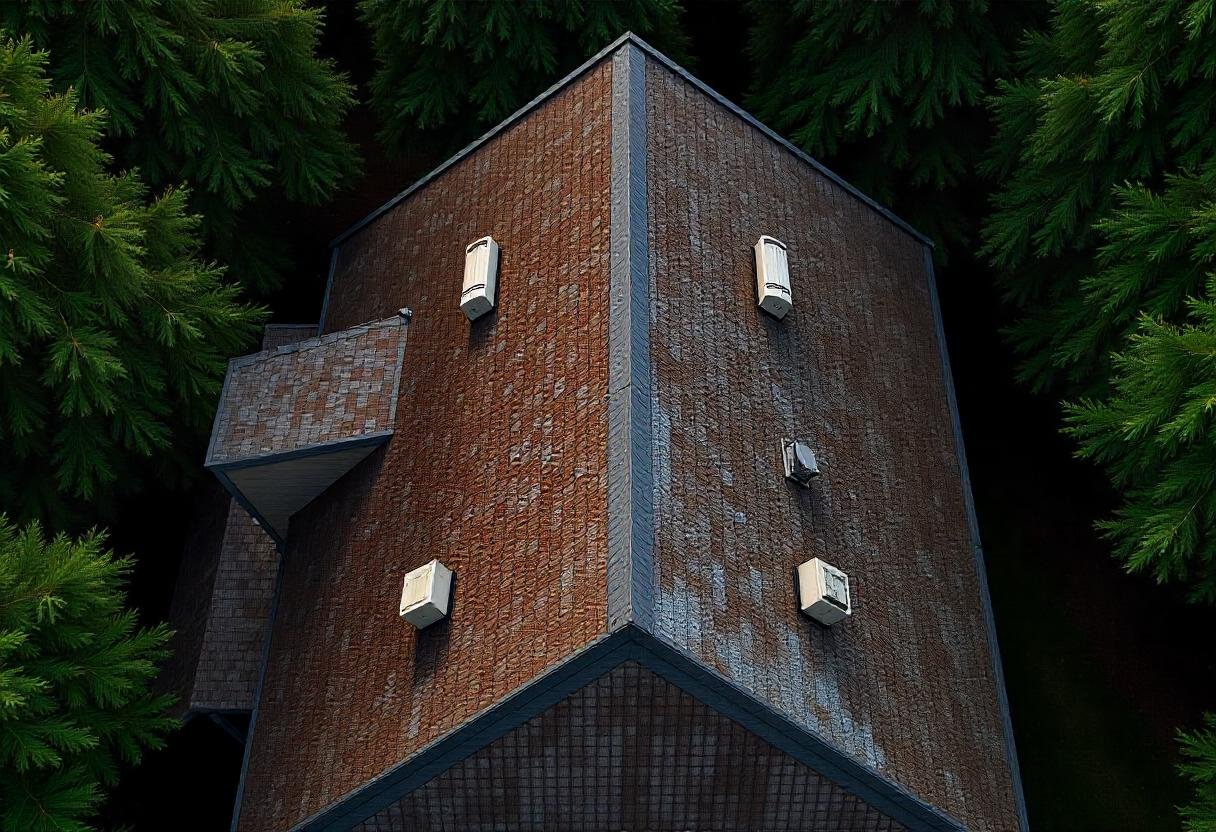Signs Your Roof Suffers from Poor Ventilation

Proper roof ventilation is a crucial aspect of maintaining the health of your home, especially in Florida’s hot and humid climate. Poor ventilation can lead to higher energy bills, structural damage, and even health issues caused by mold. Recognizing the signs of poor roof ventilation can save you time, money, and unnecessary stress. In this blog, we’ll explore key indicators of poor ventilation, its effects, and how to fix it.
1. Why Roof Ventilation Matters in Florida
Florida’s unique climate—characterized by high humidity and scorching temperatures—makes effective roof ventilation essential. Without adequate airflow, hot air becomes trapped in your attic, causing temperatures to soar. This not only shortens the lifespan of your roof but also raises cooling costs and encourages moisture buildup, which can lead to mold growth.
Roof ventilation benefits include energy efficiency, extended roof life, and improved indoor air quality. It ensures the temperature inside your home stays comfortable, even during Florida’s hottest months.
2. Signs of Poor Roof Ventilation
A. Hot and Stuffy Attic
If your attic feels unbearably hot, even during cooler months, it’s a clear sign of insufficient ventilation. Proper ventilation keeps attic temperatures within 10–15 degrees of the outside temperature, preventing heat from radiating into your living spaces.
B. High Energy Bills
Are your energy bills unusually high? Poor ventilation forces your HVAC system to work harder to maintain indoor comfort, leading to increased energy consumption. This is especially noticeable in Florida’s summer months when air conditioning is already in high demand.
C. Ice Damming (Uncommon in Florida)
While ice damming isn’t an issue for most Florida homes, inadequate ventilation can still create temperature imbalances that cause condensation. This can mimic the effects of ice damming by leading to moisture accumulation on the roof.
D. Mold and Mildew Growth
One of the most serious signs of poor roof ventilation is mold or mildew in your attic. Trapped moisture creates a perfect breeding ground for mold, which can damage your home and pose health risks to your family.
E. Premature Roof Deterioration
Overheated attics can cause shingles to warp, crack, or lose granules prematurely. This shortens the lifespan of your roof and increases the likelihood of costly repairs.
F. Musty Odors Indoors
If you notice a persistent musty smell in your home, poor roof ventilation may be to blame. This odor is often caused by moisture buildup in the attic, which can seep into your living spaces over time.
3. Causes of Poor Roof Ventilation
Understanding the root causes of poor roof ventilation helps in identifying the best solutions. Common culprits include:
- Blocked or Insufficient Vents: Dust, debris, or improper installation can obstruct airflow.
- Improper Vent Placement: Ventilation systems must be strategically placed to ensure proper airflow.
- No Ridge or Soffit Vents: Without these essential vents, hot air gets trapped inside the attic, leading to ventilation problems.
4. Effects of Poor Roof Ventilation
Failing to address poor ventilation can have far-reaching consequences:
- Higher Energy Costs: An overheated attic forces your AC to work overtime, driving up your utility bills.
- Structural Damage: Moisture trapped in the attic can cause wooden beams and other structural components to rot.
- Health Hazards: Mold and mildew growth can trigger allergies, asthma, and other respiratory issues.
- Decreased Roof Lifespan: Shingles and other roofing materials deteriorate faster when exposed to excessive heat and moisture.
5. Solutions to Improve Roof Ventilation
A. Install Ridge and Soffit Vents
Ridge vents allow hot air to escape from the attic, while soffit vents let cool air enter from below. Together, they create a balanced ventilation system that ensures constant airflow.
B. Add Attic Fans
Attic fans can help circulate air and prevent heat buildup, especially in larger homes where natural ventilation may not be sufficient.
C. Unblock Existing Vents
Ensure all vents are clear of debris or obstructions. Regular maintenance can keep airflow smooth and efficient.
D. Consult a Roofing Professional
If you’re unsure about your roof’s ventilation system, consult a roofing contractor who specializes in Florida’s climate. They can assess your roof’s condition and recommend the best solutions for your home.
6. How Roofing Services Florida Can Help
At Roofing Services Florida, we specialize in assessing and resolving roofing ventilation issues. With years of experience working in Florida’s unique climate, our team is equipped to improve your roof’s ventilation, extend its lifespan, and enhance your home’s energy efficiency.
Conclusion
Poor roof ventilation may not be immediately noticeable, but its effects can be costly and harmful over time. By identifying the signs early—such as hot attics, high energy bills, and mold growth—you can take proactive steps to protect your home. Addressing ventilation issues not only saves money but also ensures your roof remains in top condition for years to come.
Struggling with poor roof ventilation? Contact Roofing Services Florida today for a free inspection and expert solutions tailored to your home’s needs. Protect your roof and enjoy a more comfortable, energy-efficient home!


